Affiliate links on Android Authority may earn us a commission. Learn more.
Fitbit Sense 2 vs Versa 4: Which should you buy?


Frequently ranked among the best smartwatches you can buy, Fitbit’s flagship devices boast detailed fitness tracking, reliable sleep monitoring, and the company’s exemplary companion app. While the Versa 4 and Sense 2 still have much in common, their differences are worth sorting through to find out which is the right fit for you. Read more in our Fitbit Sense 2 vs Versa 4 comparison.
Fitbit Sense 2 vs Versa 4: Design
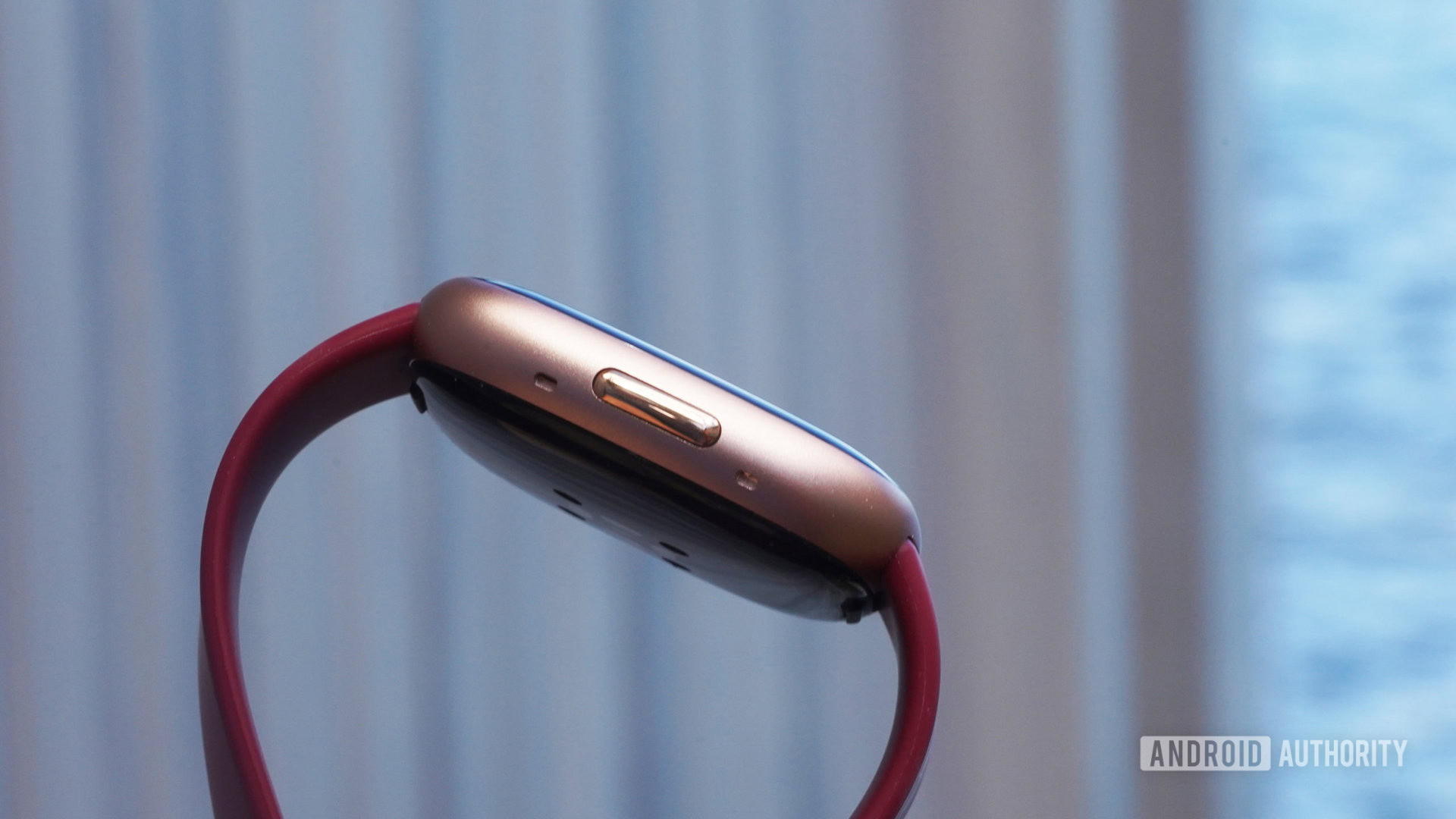
We were already fans of the design of Versa 3 and the original Sense. The newer models of both lineups sport significant design improvements. Most prominently, each adds a much-appreciated physical button. This is a major upgrade in terms of usability, considering how finicky we found the inductive button on the previous models. In addition to being clickable, the buttons are relocated slightly up the watch’s body for smoother interaction.
Beyond the button, both the Sense 2 and Versa 4 are thinner and lighter than their predecessors, with lower centers of gravity. Fitbit suggests this redesign will aid users’ comfort during all-day wear and when sleeping with the devices. At a glance, they continue to look almost identical.
Among the most notable design features added to this generation is a physical button now featured on both models.
For getting the most out of the watches while they’re on your wrist, both models also received internal overhauls. New hardware and an upgraded processor translate to faster load times and snappier interactions. Meanwhile, a refreshed operating system with customizable tiles means more personalized organization and easier access to the information users want front and center. You can quickly swap between fitness stats, workout modes, and more on the updated Fitbit OS.
Deviating from the Versa 4, the Fitbit Sense 2 showcases an upgraded way to collect EDA and ECG readings. Instead of a metal strip running along the edge of the device like in the original Sense, metal is now integrated into the watch’s glass face. This metal interface provides a more refined look and easier interaction between users and the device.
Fitbit Sense 2 vs Versa 4: Features
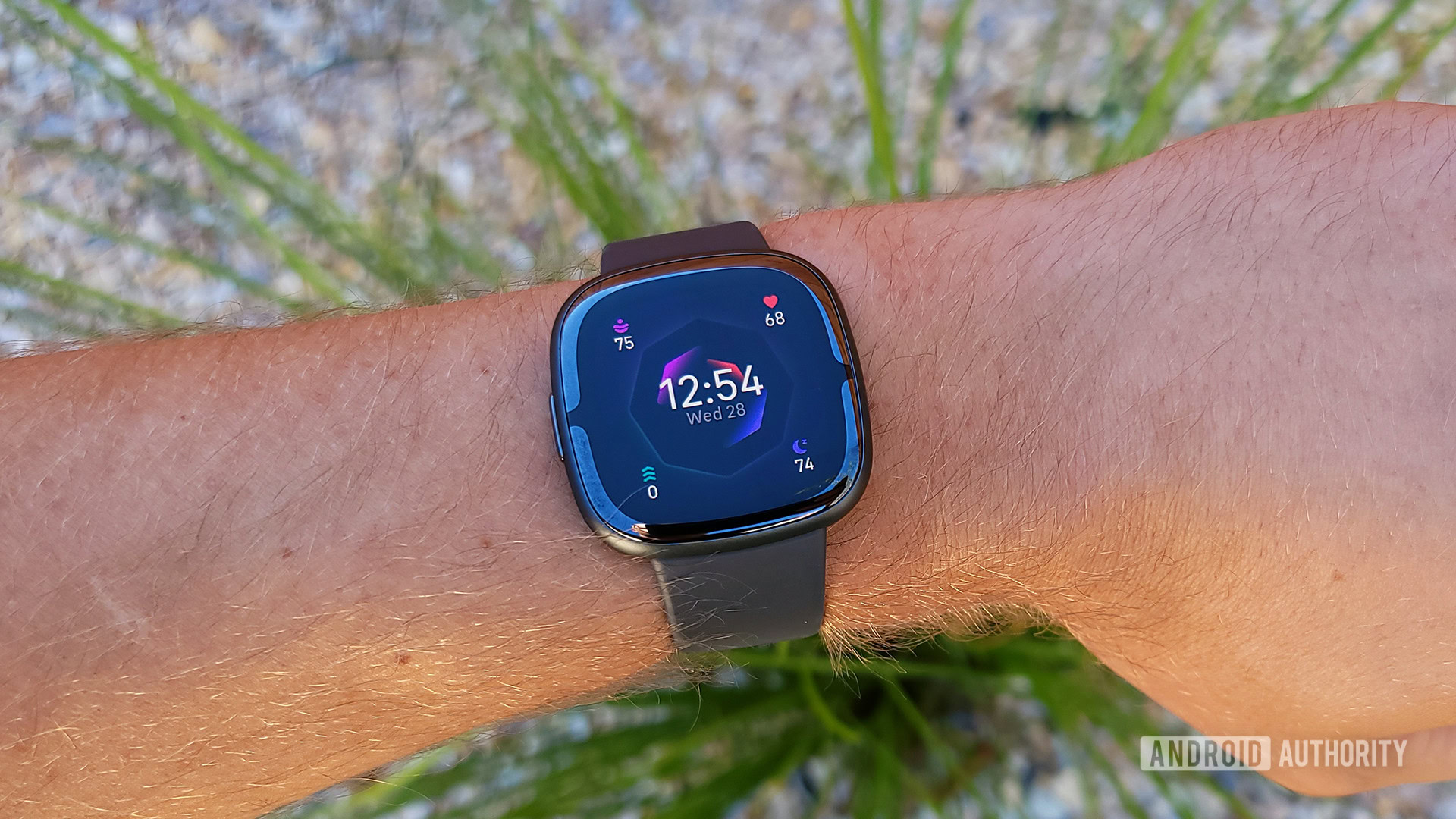
The easiest way to wrap your head around the Sense 2 vs the Versa 4 is to consider the latter a pared-down version of the former. All features found on the Versa 4 are also available on the Sense 2. Meanwhile, many advanced health-tracking sensors and tools are only available on the Sense 2.
Both smartwatches still pack large AMOLED screens, speakers with Bluetooth call and Alexa support (no Google Assistant), and a refreshed OS. Both track your activity and heart rate and offer familiar features such as run/walk detection and built-in GPS.
For activity-tracking enthusiasts, Fitbit now pushes more than 40 exercise modes, including everything from dancing to HIIT to CrossFit. Fitbit Premium users can tap into their Daily Readiness Score for workout and recovery guidance and a personalized Active Zone Minutes goal.
Consider the Versa 4 a pared down version of the Sense 2, cutting advanced health sensors for a lower price tag.
For deeper insight into your overnight stats, both the Versa 4 and Sense 2 spotlight Fitbit’s Sleep Profile. Analyzing your key sleep metrics against those typical for your age and gender, Fitbit will generate your monthly sleep profile. This includes an adorable animal phenotype plus personalized guidance on how to improve your sleep quality. This tool is only accessible with a Fitbit Premium subscription, but luckily, both smartwatches come with a free six-month subscription at purchase.
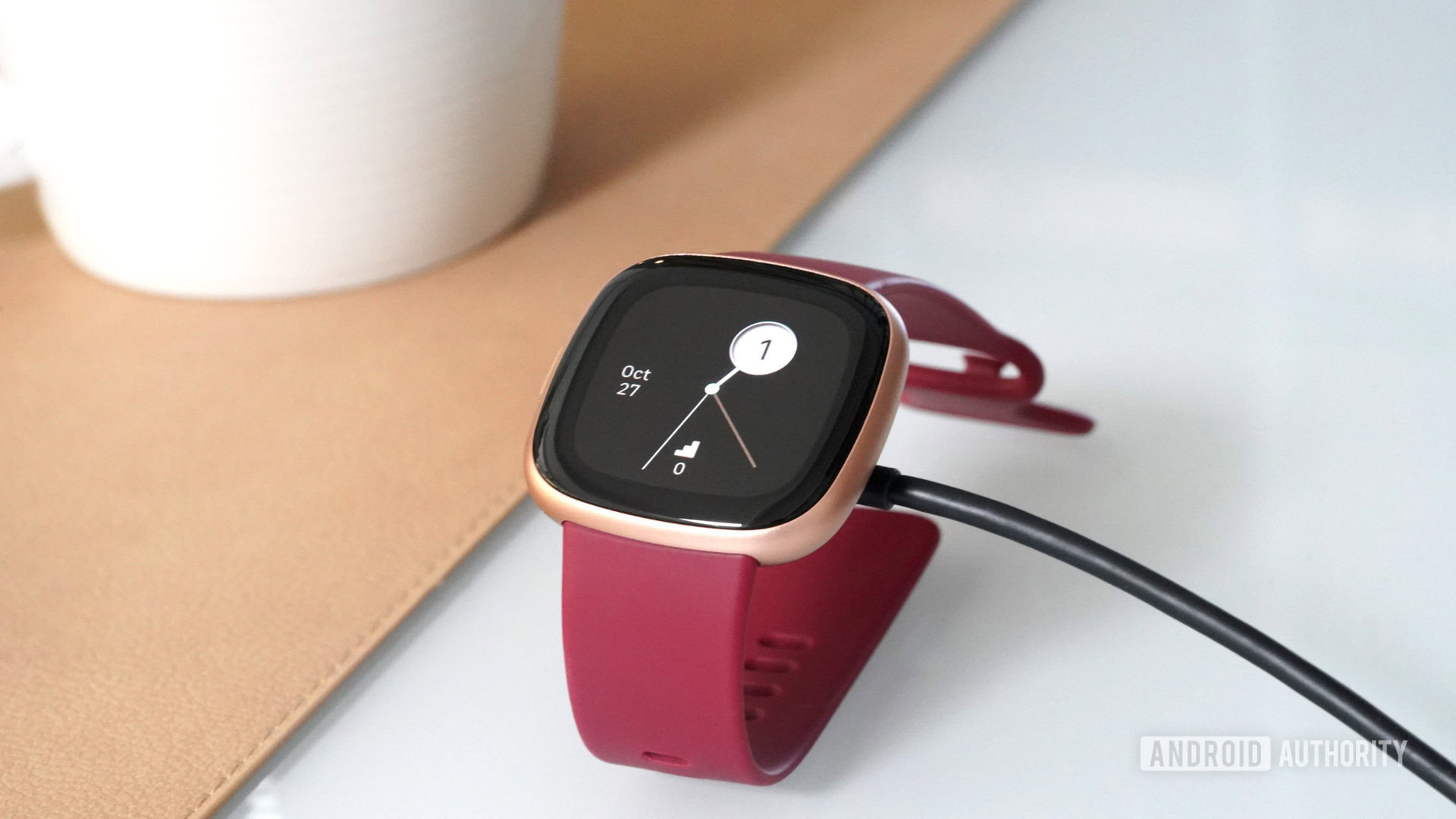
The most exciting feature to hit both models is support for Google Maps and Google Wallet. Though unavailable at launch, these two Google favorites are now available on the latest Fitbit smartwatches. That means access to turn-by-turn directions on your wrist and the convenience of digital payments everywhere Google Pay is accepted.
The devices also share specs in terms of battery life and charging. Fitbit claims both lineups can last more than six days on a single charge, mirroring the original Sense and Versa 3 claims. When you do need to top off, either device can grab a full day’s worth of battery in 12 minutes.
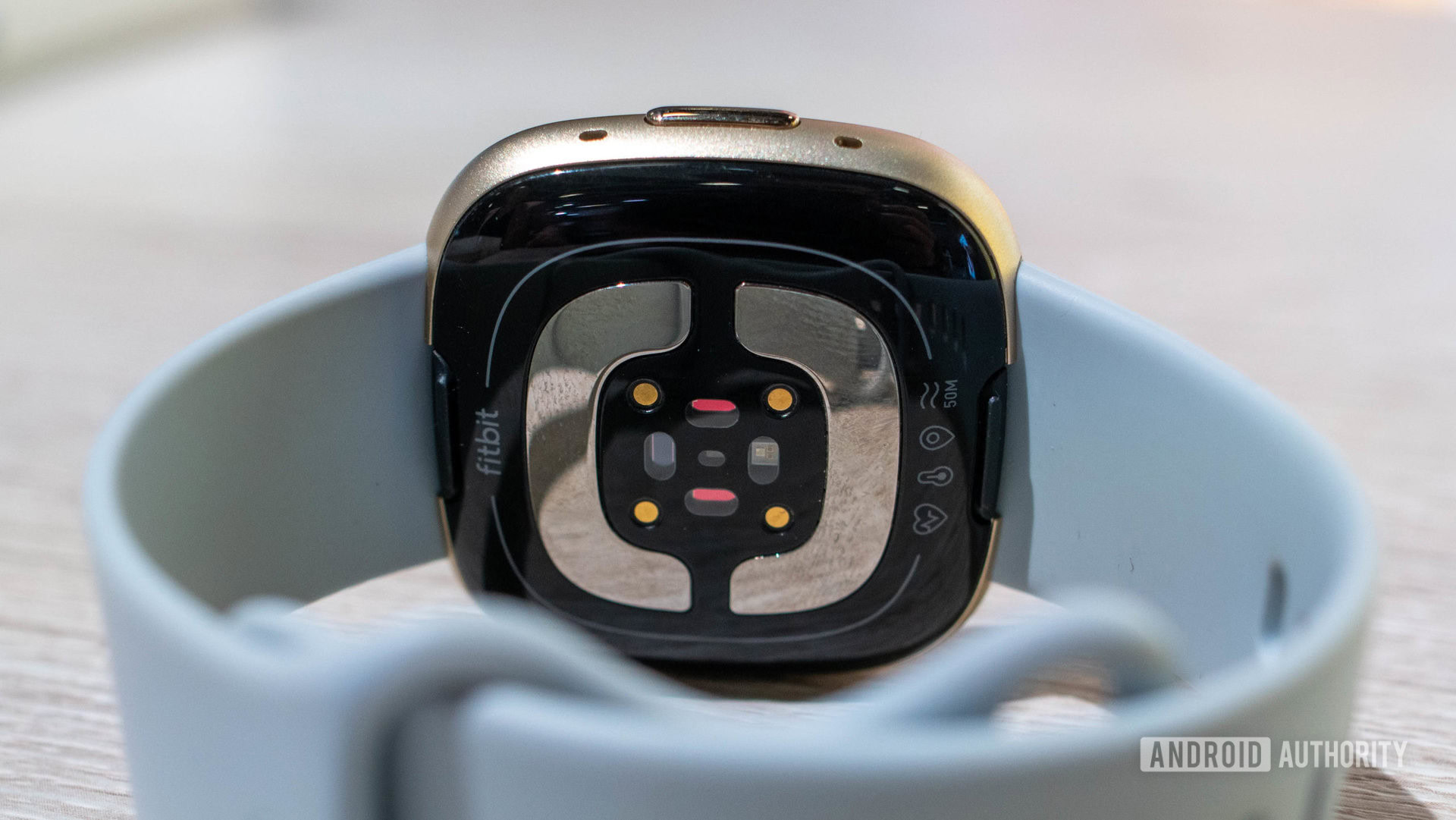
Similarities in the devices’ feature sets stop short at advanced health sensors. Fitbit’s original Sense stood out as a powerful health monitoring tool. The latest generation is even more involved than ever.
Headlining the device is a continuous Body Response sensor for all-day stress management. Using your heart rate, heart variability, skin temperature, and continuous, all-day EDA metrics, the Sense 2 can help identify stress triggers and alert users to body changes. It also offers a Check-in button where you will find mindfulness tools like guided breathing and more.
This feature is in addition to the device’s electrocardiogram (ECG) app, where users can take on-demand AFib assessments to keep tabs on signs of the condition. Both the Sense 2’s EDA sensor and ECG boast FDA clearance. Neither is available on the Versa 4.
Fitbit Sense 2 vs Versa 4: Price and colors
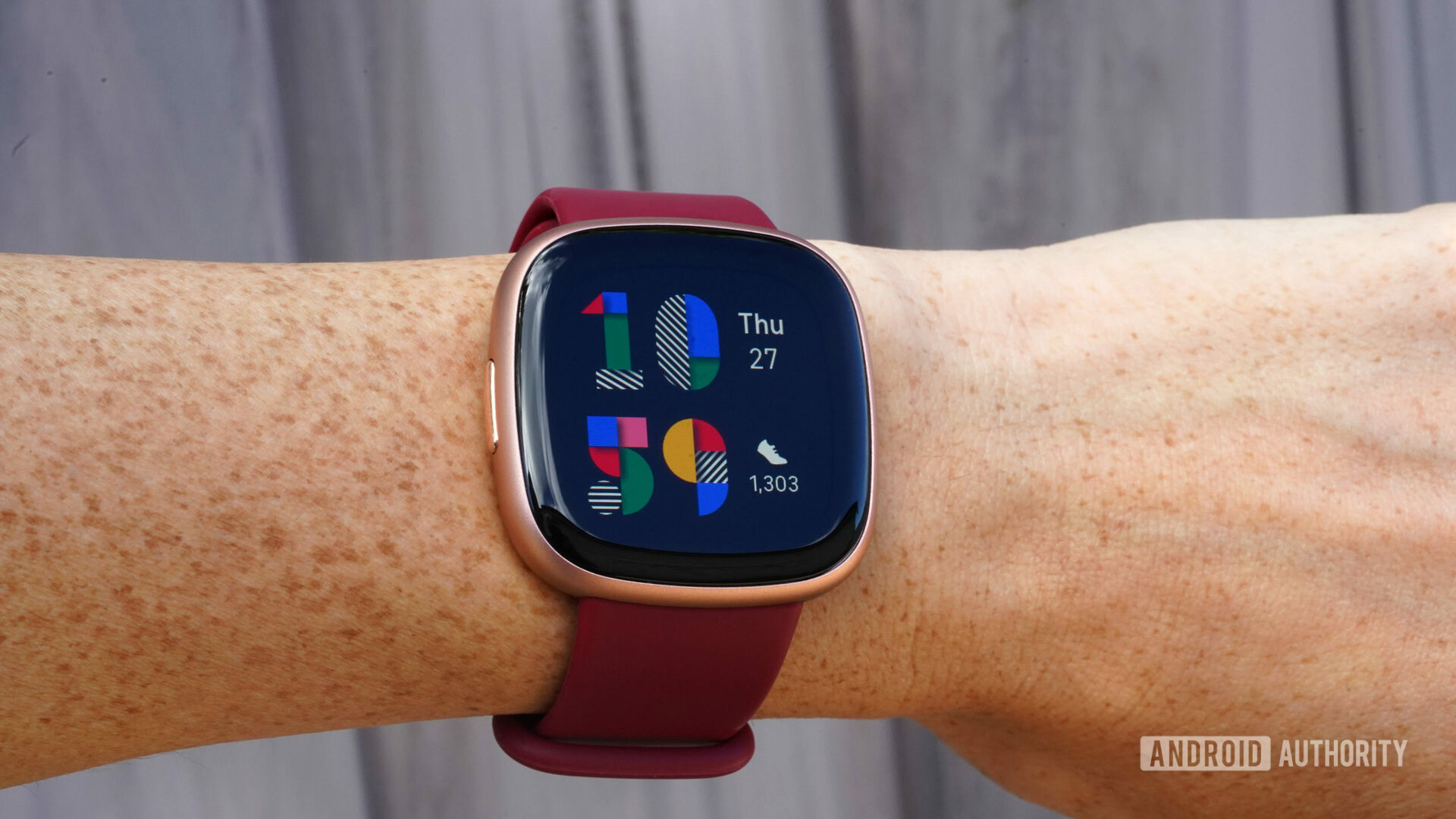
- Fitbit Versa 4: $229
- Fitbit Sense 2: $299
The Versa 4 launched at $229 and the Sense 2 at $299. That’s a $70 upcharge for detailed health monitoring that may or may not be necessary for you personally. Both prices also include half a year of free access to Fitbit Premium. This allows users to test out features otherwise hidden beyond a paywall. Overall, the pricing is competitive compared to the latest devices from Samsung and Apple, keeping Fitbit squarely in the smartwatch conversation. On the other hand, the devices don’t offer nearly as robust of a smartwatch experience as these competitors, especially considering their complete lack of third-party app support.
The two devices distinguish themselves from each other in color options. The Versa 4 is available in graphite with a black band, platinum with a band in Aegean Blue, or Copper Rose with a band in either Rosewater or Beet. The Sense 2 is available in graphite with a graphite band, platinum with a lunar white band, or pale gold with a band in Blue Mist.
Both devices are also compatible with tons of alternative straps sold separately. These can be found on Fitbit’s website or from third-party retailers. Both models are compatible with older Fitbit Sense and Versa 3 straps, so hang on to any old favorites.
Fitbit Sense 2 vs Fitbit Versa 4 Specs
| Fitbit Sense 2 | Fitbit Versa 4 | |
|---|---|---|
Display | Fitbit Sense 2 Touchscreen AMOLED | Fitbit Versa 4 Touchscreen AMOLED |
Dimensions | Fitbit Sense 2 38.1 x 38.1 x 11.43mm Small strap: 140-180mm Large strap: 180-221mm | Fitbit Versa 4 38.1 x 38.1 x 11.43mm Small strap: 140-180mm Large strap: 180-221mm |
Water resistance | Fitbit Sense 2 Water resistant to 50m | Fitbit Versa 4 Water resistant to 50m |
Compatibility | Fitbit Sense 2 Android OS 10 or higher iOS 13.3 or higher | Fitbit Versa 4 Android OS 10 or higher iOS 13.3 or higher |
Smart features | Fitbit Sense 2 Google Maps (coming soon) Google Wallet (coming soon) On-wrist Bluetooth calls Alexa built in Fitbit Pay Find My Phone Call, text, calendar, email, music control, and app notifications | Fitbit Versa 4 Google Maps (coming soon) Google Wallet (coming soon) On-wrist Bluetooth calls Alexa built in Fitbit Pay Find My Phone Call, text, calendar, email, music control, and app notifications |
Sensors and components | Fitbit Sense 2 Electrical sensors compatible with ECG & EDA app Skin temperature sensor Red and infrared sensors for oxygen saturation (SpO2) monitoring Optical heart rate sensor Built-in GPS + GLONASS Gyroscope Altimeter 3-axis accelerometer Ambient light sensor Wi-Fi (802.11b/g/n 2.4GHz) NFC Vibration motor Speaker Microphone | Fitbit Versa 4 Red and infrared sensors for oxygen saturation (SpO2) monitoring Optical heart rate sensor Built-in GPS + GLONASS Gyroscope Altimeter 3-axis accelerometer Ambient light sensor Wi-Fi (802.11b/g/n 2.4GHz) NFC Vibration motor Speaker Microphone |
Memory | Fitbit Sense 2 7 days of motion data, daily totals for past 30 days HR data at 1-second intervals during exercise, 5-second intervals all other times | Fitbit Versa 4 7 days of motion data, daily totals for past 30 days HR data at 1-second intervals during exercise, 5-second intervals all other times |
Materials | Fitbit Sense 2 Case: Aluminum Strap: flexible material similar to that used in many sports watches | Fitbit Versa 4 Case: Aluminum Strap: flexible material similar to that used in many sports watches |
Colors | Fitbit Sense 2 Graphite/graphite case Lunar White/platinum case Blue Mist/pale gold case | Fitbit Versa 4 Black/graphite case Aaegen Blue/platinum case Beet/Copper Rose case Rosewater/Copper Rose case |
Battery | Fitbit Sense 2 Smartwatch mode: 6+ days Lithium-polymer battery Charge time: (0-100%): two hours | Fitbit Versa 4 Smartwatch mode: 6+ days Lithium-polymer battery Charge time: (0-100%): two hours |
Fitbit Sense 2 vs Fitbit Versa 4: Which should you buy?
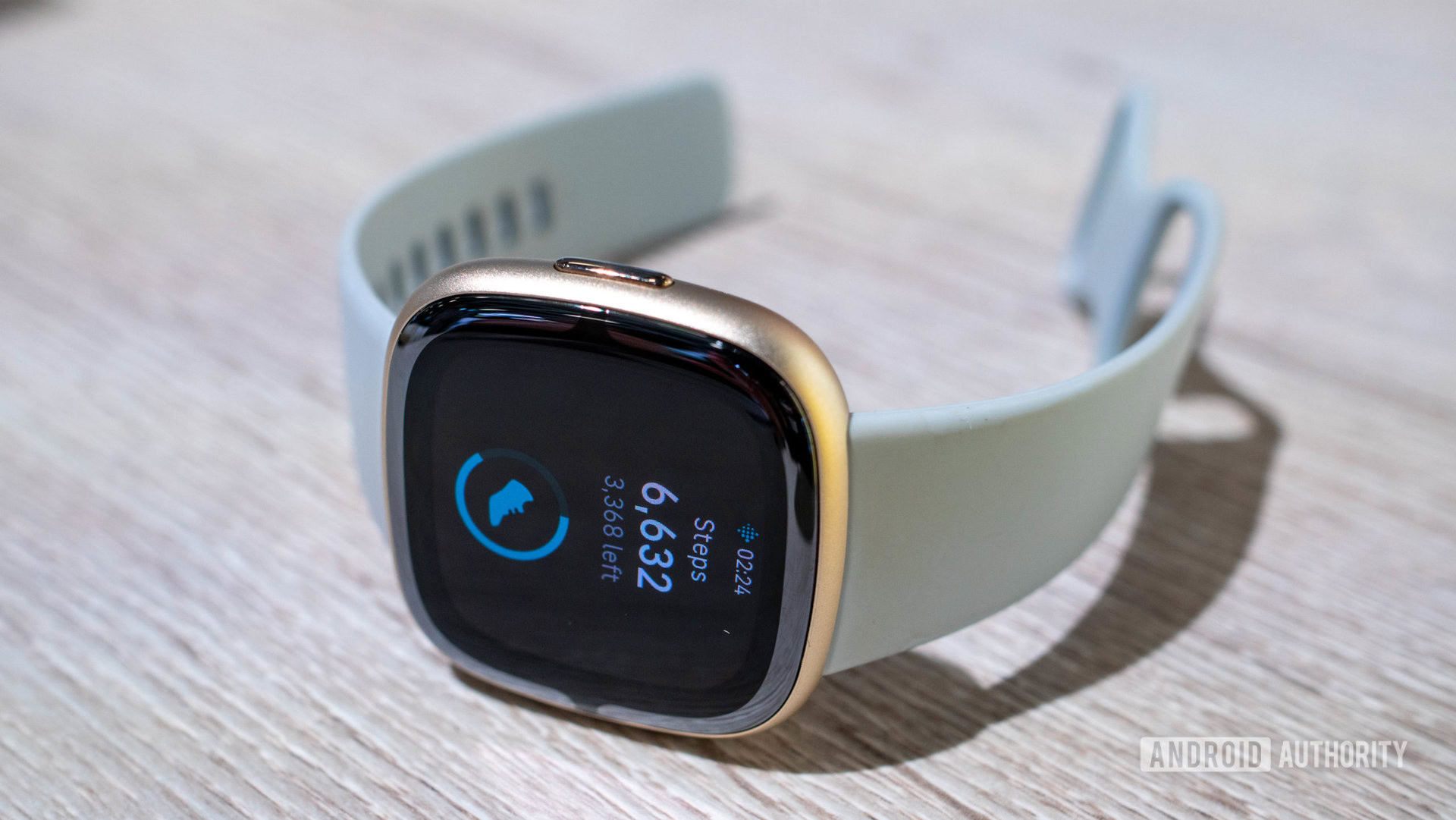
As we saw in the last generation of these devices, Fitbit’s top smartwatches exhibit many common features. Likewise, the Sense 2 and Versa 4 still share similar design aesthetics and many internal specs. Only advanced health-tracking tools set the Sense 2 apart.
For most people, the Versa 4 brings enough to the table. With its physical button, added sport modes, and future support for Google’s top apps, the Versa 4 is a nice wearable. Add in six free months of Fitbit Premium, and it’s a great upgrade or first entry into the Fitbit ecosystem.
However, if you’re deep into health tracking or have any health concerns, the Sense 2 might be worth the extra cash. As mentioned, the Sense 2 offers ECG, EDA, and cEDA readings. These tools can help users gain a more holistic understanding of their wellness. Fitbit’s Body Response feature is also only available on the Sense 2. In short, the Sense 2 is the best health-focused device available from one of the most reliable names in tracking.
If you want the absolute best features and tools Fitbit has to offer, the Sense 2 is the pick.
Deciding between the Sense 2 vs the Versa 4 comes down to your specific needs. If your goal is to track your fitness basics, the Versa 4 offers great value at a good price. The Sense 2 is only the right option if you want the best health monitoring Fitbit offers.
All that being said, we are also quite partial to the older models. The latest Fitbit smartwatches drop several key features we feel made the lines well-rounded. The Versa 3 and the original Sense offer third-party app support, and Wi-Fi connectivity. They also support Google Assistant. The newest generation of both lines do not offer any of these features. If we’re being honest with ourselves, Fitbit smartwatches don’t appear to have a very bright future. In like of the Google Pixel Watch, the company seems to be kneecapping competition from the Fitbit stable to redirect shoppers to the Google-branded smartwatch.
What if no Fitbit device is right for you? If you’re an iPhone user, we suggest the Apple Watch Series 8 for the best smartwatch experience. We direct shoppers to the Samsung Galaxy Watch 5 Pro for the top Wear OS device you can buy. Alternatively, the Samsung Galaxy Watch 6 series makes for an excellent alternative vs the Fitbit Versa 4. There are also plenty of options from Garmin worth considering. For even more picks, check our round up of the best Fitbit alternatives you can buy